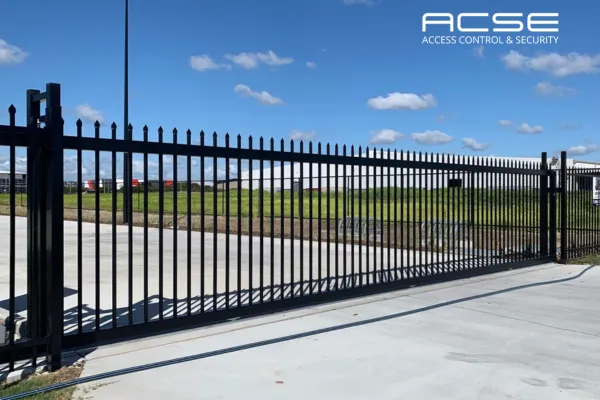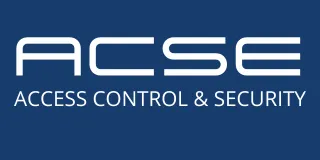
What to Know About Load and Stress Factors When Designing Gates for High Traffic Areas
In high-traffic areas, automated gate systems are under constant strain. Whether at commercial complexes, industrial facilities, parking lots, or gated communities, gates must endure frequent use, heavy loads, and environmental stresses. If not properly designed, gates in these settings can experience premature wear, operational failures, and costly downtime, leading to frustrated end-users and expensive repairs.
For system integrators, gate automation installers, fence contractors, and end-users, understanding load and stress factors is critical to designing gates that are reliable, durable, and efficient under continuous operation. This article provides a practical guide to the most important considerations, key factors to evaluate, and proven design tips to ensure gates perform optimally in high-traffic environments.
1. Understanding Load and Stress in Gate Systems
Load and stress refer to the forces acting on a gate system during its operation, including weight, environmental pressure, and mechanical strain. In high-traffic areas, these forces are amplified due to frequent openings and closings, as well as the physical demands of accommodating various vehicles and environmental factors.
Types of Loads to Consider
Static Load:
The weight of the gate itself when at rest. This includes the materials used in the gate frame, cladding, and any additional components like decorative elements or security hardware.
Dynamic Load:
The forces exerted during the gate's movement. Frequent opening and closing cycles generate repetitive strain on the operator, hinges, rollers, and track.
Wind Load:
Gates, particularly swing and cantilever types, are vulnerable to wind forces. High winds can stress the structure and motor, causing alignment issues and operational failures.
Impact Load:
Occurs when the gate encounters unexpected obstructions, such as vehicles or debris. Impact loads are particularly damaging if the gate system lacks safety devices to stop or reverse movement.
Traffic Load:
The number of operational cycles per day in high-traffic zones. For example, gates at industrial warehouses or busy commercial parking lots may open hundreds of times daily.
2. Key Considerations for High-Traffic Gate Design
When designing gates for high-traffic areas, several critical factors must be evaluated to ensure durability and efficiency.
2.1. Material Selection
The material used for the gate structure directly affects its strength, weight, and ability to handle stress.
Steel:
Strong and durable, ideal for industrial or commercial applications.
Requires anti-corrosion treatments like galvanization or powder coating for longevity.
Aluminum:
Lightweight and resistant to rust, making it suitable for gates that require frequent operation.
Less durable under heavy impact but excellent for controlled access in gated communities or parking facilities.
Composite Materials:
Offer a balance of strength and weight while reducing maintenance needs.
Tip: Choose materials based on the site’s traffic volume, environmental conditions, and operational demands.
2.2. Gate Type and Configuration
Selecting the appropriate gate type is essential for high-traffic areas, as the design affects how loads are distributed.
Sliding Gates:
Ideal for high-traffic and wind-prone areas due to their ground-supported design.
Track-mounted systems reduce stress on the gate frame and operator.
Cantilever Gates:
Excellent for uneven ground or areas prone to debris buildup.
Require robust counterbalance systems to support their weight.
Swing Gates:
Suitable for low- to medium-traffic environments but vulnerable to wind stress and require clear operating space.
For high traffic, reinforced hinges and operators are essential.
Tip: Sliding gates are generally the best choice for high-traffic areas because they handle dynamic and wind loads more effectively.
2.3. Gate Operator and Motor Capacity
The gate operator is the workhorse of the system, and choosing the right motor capacity is essential for longevity and reliability.
Continuous Duty Motors:
For high-traffic gates, use operators rated for continuous duty cycles. These motors can handle frequent openings without overheating.
Hydraulic Operators:
Provide superior performance under heavy loads and extreme stress. They are ideal for industrial and high-traffic commercial gates.
Electromechanical Operators:
Cost-effective and reliable for moderate loads and traffic. However, they may require additional cooling systems for continuous operation.
Tip: Always size the motor to exceed the gate's weight and anticipated traffic load to avoid overworking the operator.
2.4. Environmental Factors
High-traffic gates are often exposed to harsh environmental conditions, which add additional stress.
Wind Zones:
In windy areas, design gates with perforated panels to reduce wind resistance.
Temperature Extremes:
Install operators with built-in heaters or cooling systems for reliability in extreme heat or cold.
Corrosion Risk:
Use weatherproof coatings and materials to prevent rust in humid or coastal environments.
Tip: Perform a detailed site assessment to identify environmental challenges and design accordingly.
3. Engineering Tips to Minimize Stress and Extend Lifespan
3.1. Reinforce Gate Structure
Use welded joints instead of bolted connections for better load distribution and durability.
Incorporate cross-bracing in large gates to improve rigidity and reduce flexing under stress.
3.2. Balance the Load
For cantilever gates, ensure proper counterbalance to evenly distribute weight across rollers and supports.
For sliding gates, install high-quality tracks and rollers rated for the gate's weight.
3.3. Use Heavy-Duty Components
Select industrial-grade hinges, rollers, and bearings designed for high-cycle applications.
Use anti-friction components to reduce wear on moving parts.
3.4. Optimize Operator Placement
Properly align the gate operator to reduce strain on the motor and mechanical components.
Install guides and limiters to ensure smooth operation and avoid misalignment.
3.5. Implement Safety Devices
Use safety devices like photoelectric sensors, edge sensors, and loop detectors to prevent impact loads caused by obstructions.
Include soft-start and soft-stop features to minimize sudden jerks during operation.
4. Maintenance is Key for High-Traffic Gates
Even the most well-designed gate system will fail prematurely without proper maintenance. High-traffic gates require regular inspections and servicing to handle the constant load and stress.
Maintenance Checklist:
Lubricate Moving Parts: Reduce friction and wear on rollers, hinges, and tracks.
Inspect for Misalignment: Check tracks, rollers, and gate operators for signs of uneven wear.
Test Safety Features: Ensure sensors and reversing mechanisms are functioning properly.
Clean Tracks and Rollers: Remove debris that can obstruct smooth movement.
Monitor Motor Performance: Look for overheating or unusual noise that may indicate stress.
5. Why Load and Stress Management Matters
Properly managing load and stress factors during the design phase delivers significant benefits:
Extended System Lifespan: Gates designed to handle heavy loads require fewer repairs and replacements.
Reduced Downtime: Minimizing mechanical stress ensures consistent operation in high-traffic areas.
Lower Maintenance Costs: Durable components and regular maintenance prevent costly breakdowns.
Improved User Satisfaction: Reliable gate systems enhance security, convenience, and client trust.
Conclusion
Designing gates for high-traffic areas requires a careful understanding of load, stress, and environmental factors. By choosing the right materials, gate type, and operator capacity, and by implementing sound engineering principles, you can create durable systems that withstand frequent use while delivering reliable performance.
For gate automation installers, system integrators, and fence contractors, taking the time to evaluate these factors ensures satisfied clients and a strong reputation for delivering quality solutions. End-users will benefit from a long-lasting system that keeps their property secure and operational—no matter how demanding the traffic conditions.

